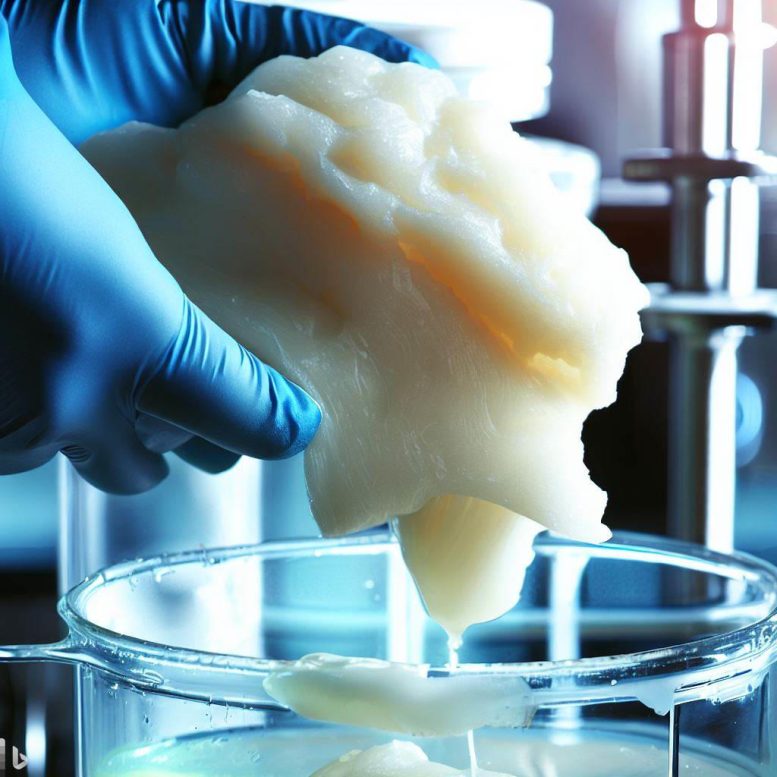
Researchers have created lab-grown fat tissue that closely mirrors the texture and make-up of natural animal fat which could enhance the flavor and texture of cultured meat. The technique involves growing fat cells in a 2D layer, then aggregating them into a 3D mass using food-grade binders, overcoming previous challenges of cultivating fat tissue in bulk and potentially enabling mass production of more realistic lab-grown meat.
Scientists have successfully proposed lab-grown adipose tissue on a substantial scale, paving the way for the possibility of large-scale production of cultured meat.
Scientists have successfully mass-produced lab-grown fat tissue mirroring the texture and composition of naturally derived animal fats.
The findings, recently published in the journal eLife, could be utilized in the creation of cell-cultured meat, enhancing its texture and taste to closely resemble traditional meat.
Cultivated meat has been making waves in the news lately, with reports from startup companies around the world developing cell-grown chicken, beef, pork, and fish – mostly in early stages of development, not ready for large-scale production and with a couple of exceptions, not yet approved for commercial sale. Most of those products in development are in the form of an unstructured mixture of cells – like chicken nuggets rather than a slice of chicken breast. What is lacking is the texture of real meat, created by muscle fibers, connective tissue, and fat – and it’s the fat that gives meat flavor.
In fact, consumer testing with natural beef of different fat content showed that the highest scores were registered for beef containing 36% fat.
However, producing cultured fat tissue in sufficient quantities has been a major challenge because, as the fat grows into a mass, the cells in the middle become starved of oxygen and nutrients. In nature, blood vessels and capillaries deliver oxygen and nutrients throughout the tissue. Researchers still have no way to replicate that vascular network at a large scale in lab-grown tissue, so they can only grow muscle or fat to a few millimeters in size.
To get around this limitation, the researchers grew fat cells from mice and pigs first in a flat, two-dimensional layer, then harvested those cells and aggregated them into a three-dimensional mass with a binder such as an alginate and mTG, which are both already used in some foods.
“Our goal was to develop a relatively simple method of producing bulk fat. Since fat tissue is predominantly cells with few other structural components, we thought that aggregating the cells after growth would be sufficient to reproduce the taste, nutrition, and texture profile of natural animal fat,” says first author John Yuen Jr, a graduate student at the Tufts University Center for Cellular Architecture (TUCCA), Massachusetts, US. “This can work when creating the tissue solely for food since there’s no requirement to keep the cells alive once we gather the fat in bulk.”
The aggregated fat cells immediately had the appearance of fat tissue, but to see if they truly reproduced the features of native fat from animals, the team carried out a series of further experiments.
First, they explored the texture, by compressing the fat tissue and seeing how much pressure it could withstand compared to natural animal fat. They found that cell-grown fat bound with sodium alginate was able to withstand a similar amount of pressure to fat from livestock and poultry, but the cell-grown fat that was bound with mTG behaved more like rendered fat – similar to lard or tallow. This suggests it could be possible to fine-tune the texture of cultured fat, so it best resembles the real-life texture of fat within meat, using different types and amounts of binders.
Cooking releases hundreds of compounds that add flavor to the meat, and most of those compounds originate from fat, including lipids and their component fatty acids. The team, therefore, examined the composition of molecules from the cell-grown fat and found that the mix of fatty acids from cultured mouse fat differed from native mouse fat. However, the cultured pig fat had a much closer fatty acid profile to the native tissue. The team’s preliminary research suggests it might be possible to supplement growing fat cells with the required lipids to ensure that they more closely match the composition of natural meat.
“This method of aggregating cultured fat cells with binding agents can be translated to large-scale production of cultured fat tissue in bioreactors – a key obstacle in the development of cultured meat,” says senior author David Kaplan, Stern Family professor of Biomedical Engineering at Tufts University and director of TUCCA. “We continue to look at every aspect of cultured meat production with an eye toward enabling mass production of meat that looks, tastes, and feels like the real thing.”
Reference: “Aggregating in vitro-grown adipocytes to produce macroscale cell-cultured fat tissue with tunable lipid compositions for food applications” by John Se Kit Yuen Jr, Michael K Saad, Ning Xiang, Brigid M Barrick, Hailey DiCindio, Chunmei Li, Sabrina W Zhang, Miriam Rittenberg, Emily T Lew, Kevin Lin Zhang, Glenn Leung, Jaymie A Pietropinto and David L Kaplan, 4 April 2023, eLife.
DOI: 10.7554/eLife.82120
The study was funded by the New Harvest, Advanced Research Projects Agency – Energy, the National Institutes of Health, and the National Defense Science and Engineering Graduate.

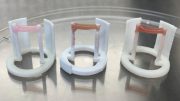
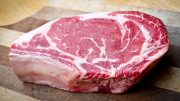

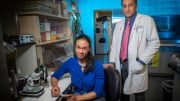
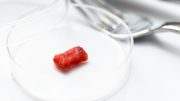
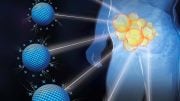

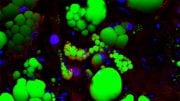
Be the first to comment on "Revolutionizing Cultured Meat: Lab-Grown Fat Unlocks Realistic Flavor and Texture"